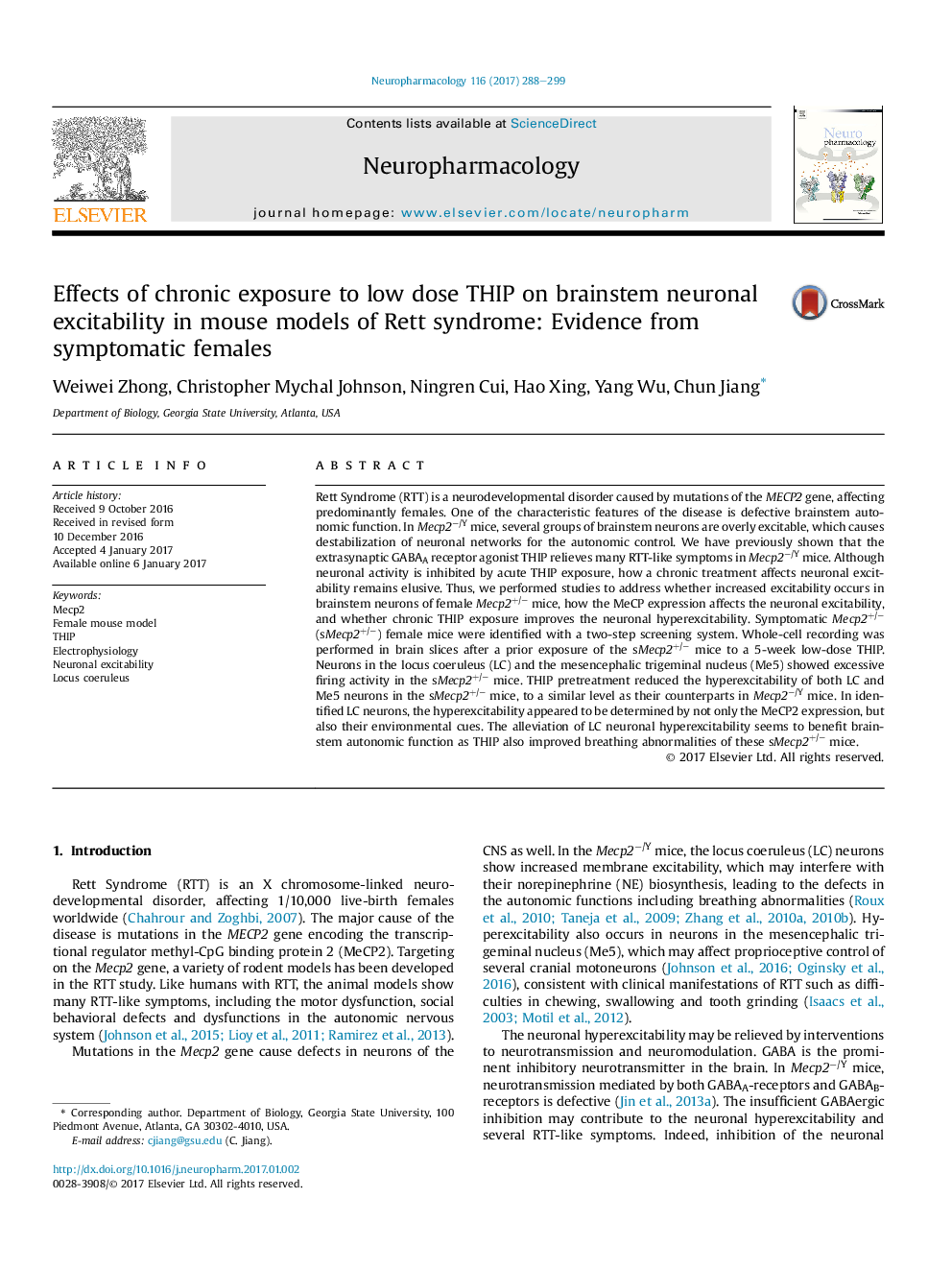| کد مقاله | کد نشریه | سال انتشار | مقاله انگلیسی | نسخه تمام متن |
|---|---|---|---|---|
| 5548949 | 1556601 | 2017 | 12 صفحه PDF | دانلود رایگان |

- Chronic treatment of THIP reduced the neuronal hyperexcitability of both locus coeruleus (LC) and the mesencephalic trigeminal nucleus (Me5) in symptomatic Mecp2+/â (sMecp2+/â) female mice.
- In identified LC neurons, the hyperexcitability appeared to be determined by not only the MeCP2 expression, but also their environmental cues.
- The alleviation of LC neuronal hyperexcitability may benefit brainstem autonomic function as THIP also improved breathing abnormalities of sMecp2+/â mice.
Rett Syndrome (RTT) is a neurodevelopmental disorder caused by mutations of the MECP2 gene, affecting predominantly females. One of the characteristic features of the disease is defective brainstem autonomic function. In Mecp2â/Y mice, several groups of brainstem neurons are overly excitable, which causes destabilization of neuronal networks for the autonomic control. We have previously shown that the extrasynaptic GABAA receptor agonist THIP relieves many RTT-like symptoms in Mecp2â/Y mice. Although neuronal activity is inhibited by acute THIP exposure, how a chronic treatment affects neuronal excitability remains elusive. Thus, we performed studies to address whether increased excitability occurs in brainstem neurons of female Mecp2+/â mice, how the MeCP expression affects the neuronal excitability, and whether chronic THIP exposure improves the neuronal hyperexcitability. Symptomatic Mecp2+/â (sMecp2+/â) female mice were identified with a two-step screening system. Whole-cell recording was performed in brain slices after a prior exposure of the sMecp2+/â mice to a 5-week low-dose THIP. Neurons in the locus coeruleus (LC) and the mesencephalic trigeminal nucleus (Me5) showed excessive firing activity in the sMecp2+/â mice. THIP pretreatment reduced the hyperexcitability of both LC and Me5 neurons in the sMecp2+/â mice, to a similar level as their counterparts in Mecp2â/Y mice. In identified LC neurons, the hyperexcitability appeared to be determined by not only the MeCP2 expression, but also their environmental cues. The alleviation of LC neuronal hyperexcitability seems to benefit brainstem autonomic function as THIP also improved breathing abnormalities of these sMecp2+/â mice.
Journal: Neuropharmacology - Volume 116, April 2017, Pages 288-299